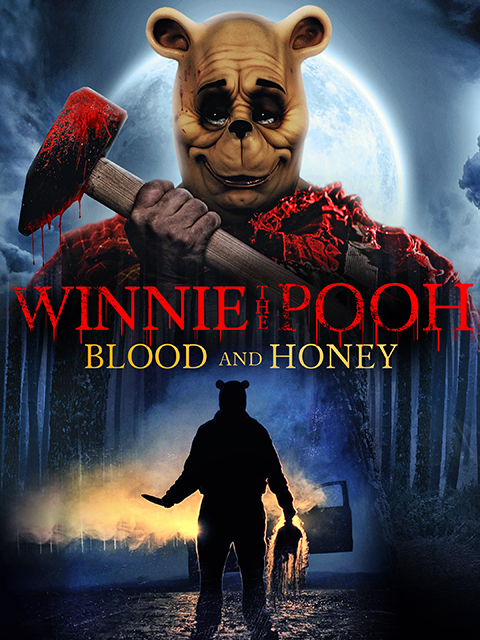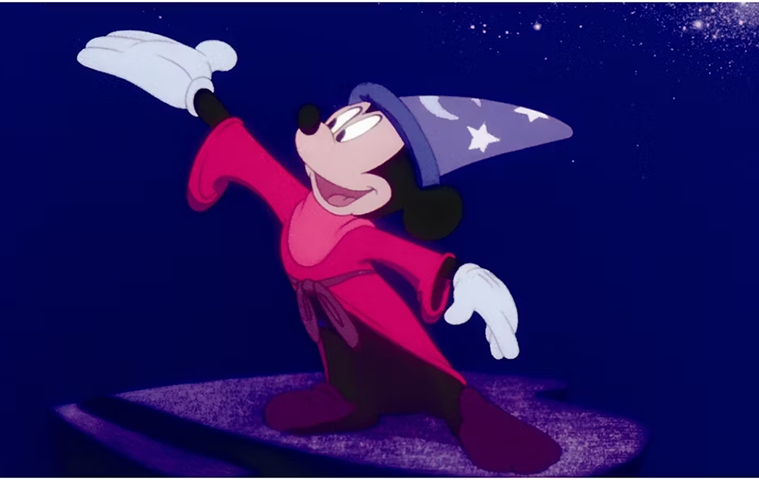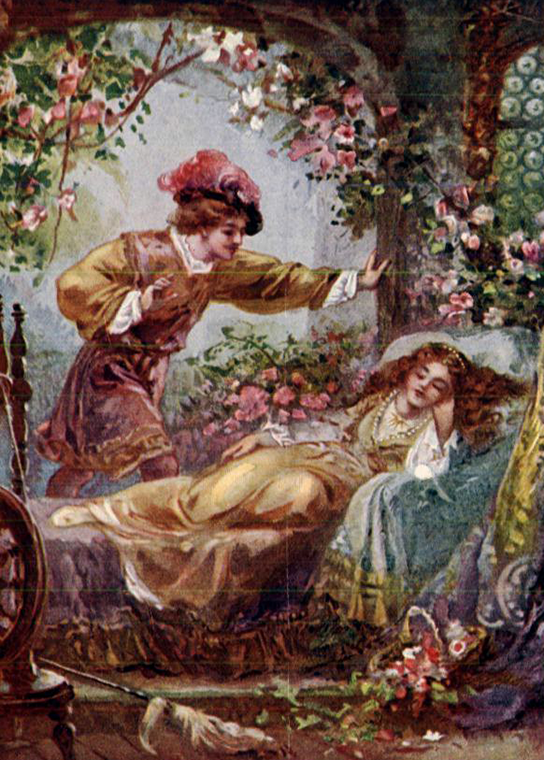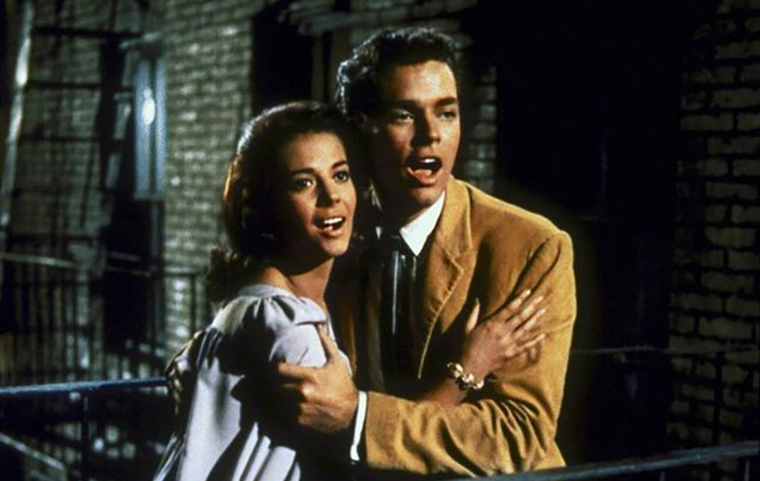
The Courthouse of Mouse: How the Public Domain Benefits Art
Tyler T. Ochoa
In 2023, Jagged Edge Productions released a new film based on the beloved A. A. Milne book, “Winnie-the-Pooh.” However, this movie transported audiences to a Hundred-Acre-Woods far removed from the one of our childhoods, reimagining Pooh Bear and Piglet as bloodthirsty killers seeking revenge for Christopher Robin’s abandonment.

Jagged Edge Productions
While “Winnie-The-Pooh: Blood and Honey” was neither a critical nor commercial success, it was 100% legal. Why? The year prior to this horror film’s release, the first book in the A. A. Milne series and its characters entered the public domain—making it fair game for terrifying transformations like this one.
“I don’t know whether ‘Blood and Honey’ will be a lasting contribution to creative culture,” jokes Tyler T. Ochoa, a professor of copyright law at the Santa Clara University School of Law. “But the point of the public domain is that people can experiment and try lots of different things.”
And Winnie-the-Pooh isn’t the only classic character that’s become fair game. Disney’s 1928 film “Steamboat Willie”—and its version of Mickey Mouse—finally entered the public domain on January 1, 2024, followed swiftly by announcements of similarly twisted takes on the mischievous mouse.
Certainly, some people might see these kinds of public domain projects as cheap rip-offs; however, Ochoa explains that other public domain projects have left a meaningful impact on art and audiences—like the Disney Princesses and hit Shakespeare retellings like “West Side Story,” “10 Things I Hate About You,” and “She’s the Man.”
To better understand how this legal concept shapes human creativity, Ochoa breaks down the history, limitations, and benefits of the public domain.
What do we mean when we talk about the public domain, and what can you legally do with works in the public domain?
The public domain is the large body of literary and artistic works that are not protected by copyright law, usually because their copyright term has expired. That means that you can perform, reproduce, and sell copies of these works, and—most importantly—you can make new works based upon public domain works, without getting permission from anyone or having to pay royalties. So, for example, you could make a new movie based on a Jane Austen novel or take a Shakespeare play and modernize it. In the case of “Steamboat Willie,” you could take that film’s version of Mickey and Minnie Mouse and create entirely new adventures for them.

Walt Disney Company
What are some of the legal limits of the public domain?
There are three caveats.
First, copyright terms differ from country to country. So, works that are in the public domain in the United States may not be in the public domain in other countries—and vice versa.
Second, although works from 1928 and earlier are in the public domain in the United States, later works, including later works inspired by those older, public domain works, are still protected by copyright. For example, even though the 1928 “Steamboat Willie” version of Mickey Mouse is now in the public domain in the US, later versions of Mickey Mouse, like Mickey as the Sorcerer's Apprentice from the 1940 movie “Fantasia,” are still protected by copyright. “Fantasia” won’t enter the public domain for another 12 years.
Third, even though copyright law no longer protects public domain works, there may still be other types of intellectual property law that are applicable. For example, if a 1928 movie has a celebrity in it, their estate might have postmortem rights of publicity if their name, image, or likeness is used for advertising or merchandising purposes. Also, in the case of “Steamboat Willie,” the character of Mickey Mouse from this film is in the public domain, but Mickey Mouse is also a trademark—or brand symbol—of the Walt Disney Company. Trademark rights don't expire when copyrights do. That means that you can use the 1928 version of Mickey Mouse, but you can't do anything that would falsely suggest that your movie was produced, sponsored, or approved by Disney in any way.
If any of those three circumstances apply, you’ll want to consult an experienced attorney. But otherwise, remember that the public domain belongs to you and everyone else.
What’s the history of this legal process? Why was copyright law created?
Interestingly, the public domain existed before copyright law existed. Copyright laws actually keep works out of the public domain for a period of time until that copyright protection expires.
Generally speaking, there are two purposes of copyright. The first is a utilitarian purpose. Creation is expensive; copying is cheap. That means that in order to encourage people to create, you have to give them an opportunity to make money from their work so that they can recoup the costs of producing it.
Imagine a $200 million Hollywood movie. A studio is not going to make that movie if it can't restrict other people from selling copies, because copyists can always sell more cheaply than the person who produced it.
Second, many people feel that copyright is a natural right of the author—that the person who created a work should naturally be able to recover any economic benefits from that work.
Those two purposes generally work together, but not always. For example, we have to consider secondary works. How do we encourage people to make new works based upon or inspired by older works? There should be some sort of legal, and therefore economic, distinction for later works to incentivize an artist to continue creating. But we should also make sure that protections only punish unfair copying, not discourage lawful inspiration. Also, we have to ask how long copyright should last. Assuming we think that the author should benefit from copyright, should it end when they die? Should it end when their children die? That’s where it starts to get complicated.
How do creators and companies establish and maintain copyright? Are there ways they try to affect the law in their favor?
In the United States, copyright arises automatically as soon as a work is created, and it lasts for the life of the author plus 70 years. However, this wasn’t always the case.
Before 1978, an author had to publish their work with a proper copyright notice in order to claim it, and they had to register their works with the U.S. Copyright Office. Then, after the first 28 years, you had to renew your copyright to keep it for another 28 years. Under this law, “Steamboat Willie” would have entered the public domain in 1984.
The rest of the world did things differently, having moved to a term based on the life of the author plus 50 years. The United States adopted this term for new works beginning in 1978; but for older works, we left in place the renewable 28-year term, extending the renewal term to 47 years.
Then in the 1990s, Disney and other large copyright holders lobbied for a copyright term extension. Europe had increased its term from life of the author plus 50 years to life of the author plus 70 years, pressuring us to increase all of our copyright terms by 20 years, which we did. However, because of the sudden shift in copyright protections, works that otherwise would have entered the public domain got an additional 20 years of protection. And that meant that for 20 years, no new works entered the public domain. Had this not happened, “Steamboat Willie” would have entered the public domain in 2004.

Illustration of Sleeping Beauty
How has the public domain impacted art in the past?
Ironically, Walt Disney made extensive use of the public domain by making new animated movies based upon public domain stories—“Snow White,” “Pinocchio,” “Cinderella,” “Sleeping Beauty,” “The Little Mermaid,” “Beauty and the Beast,” and “Frozen” were all based on public domain stories.
I think making new versions of public domain works has greatly benefited the public. That's why we want new works to enter the public domain—so that the familiar stories of your childhood can be retold or remixed in new and creative ways by other authors.
With Mickey Mouse being such an iconic character—how does copyright law distinguish a public domain version of a character from protected versions of that character?
When you have a series of works featuring the same character, those works might go into the public domain at different times. The first version of the character enters the public domain when the first work goes into the public domain—however, later versions of that character, including new, different traits or attributes, might not enter the public domain until a later time.
In the 2000s, there was a fascinating copyright battle over the character Sherlock Holmes, because earlier stories from Arthur Conan Doyle’s “Sherlock Holmes” series were in the public domain, but later stories were not. So, the question was, could you only use those traits or attributes of the character that appeared in the earlier stories? Or could you mention things that only appeared in the later stories, such as Dr. Watson's second wife or Sherlock Holmes’ retirement beekeeping in Sussex? Luckily, the last of the “Sherlock Holmes” stories entered the public domain in 2023, so now we don't have to worry about that.
J.M. Barrie’s play “Peter Pan” also entered the US public domain this year. Besides yet another horror retelling, what other kinds of new works could people expect to see?
When a work enters the public domain, anyone can take that work and alter it in creative ways of their own choosing—and this trend of switching heroes into villains seems to be quite popular.
In the case of “Peter Pan,” a Broadway tour of the musical adaptation is coming to the United States this year with a new revised script. While the music and lyrics are still under copyright, they just need permission from the songwriters, not the J.M. Barrie estate.
Interestingly, there is one wrinkle in Great Britain. You can perform “Peter Pan” without permission, but you still have to pay royalties to the Great Ormond Street Hospital, to which J.M. Barrie donated the copyright. Because it’s a source of revenue for them, the British Government created a perpetual law so that royalties will be paid to the Great Ormond Street Hospital forever.

Mirisch Pictures and Seven Arts Productions
What would you say to someone who thinks this is just stealing? Why is the public domain important from an artistic perspective?
Creativity works by taking familiar things around us and remixing them. I think the public has greatly benefited from having many, many different versions of Shakespeare's plays rather than a single authorized version. We see this too with Jane Austen. There are lots of different film versions of Jane Austen's novels that help spread their popularity, and different people can find different things that they enjoy, like “Pride and Prejudice and Zombies” for those people who want to mix zombies with their classic literary tales.
By letting lots of different people experiment with creating new things, the successful ones will survive, and the less successful ones will fade away. However, in subsequent generations, people might want to make new versions or different versions of the successful ones, or maybe rediscover some of the unsuccessful ones when they go into the public domain. The public domain allows for that. So, I say: enjoy your freedom to copy and make new works based upon these public domain works.

